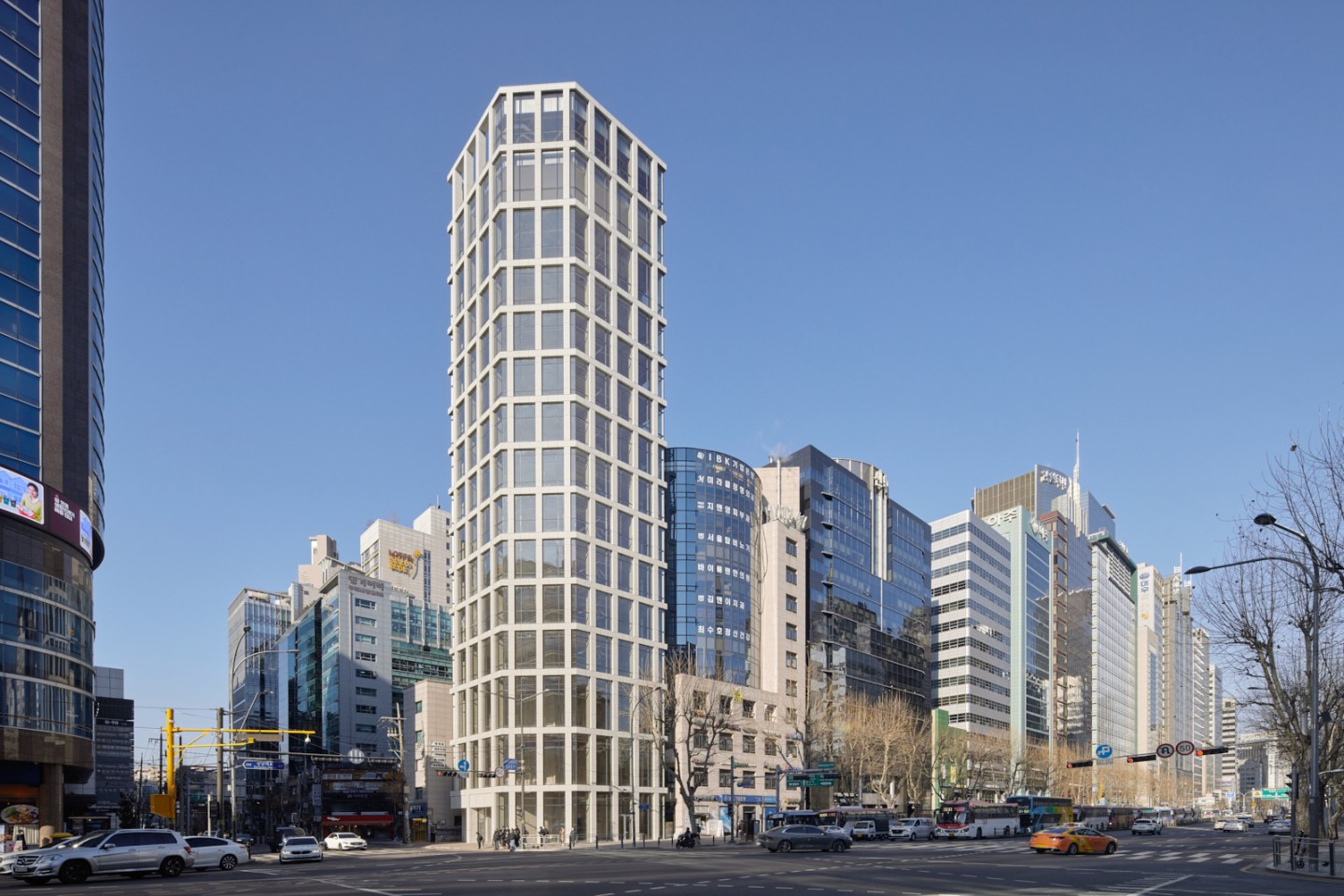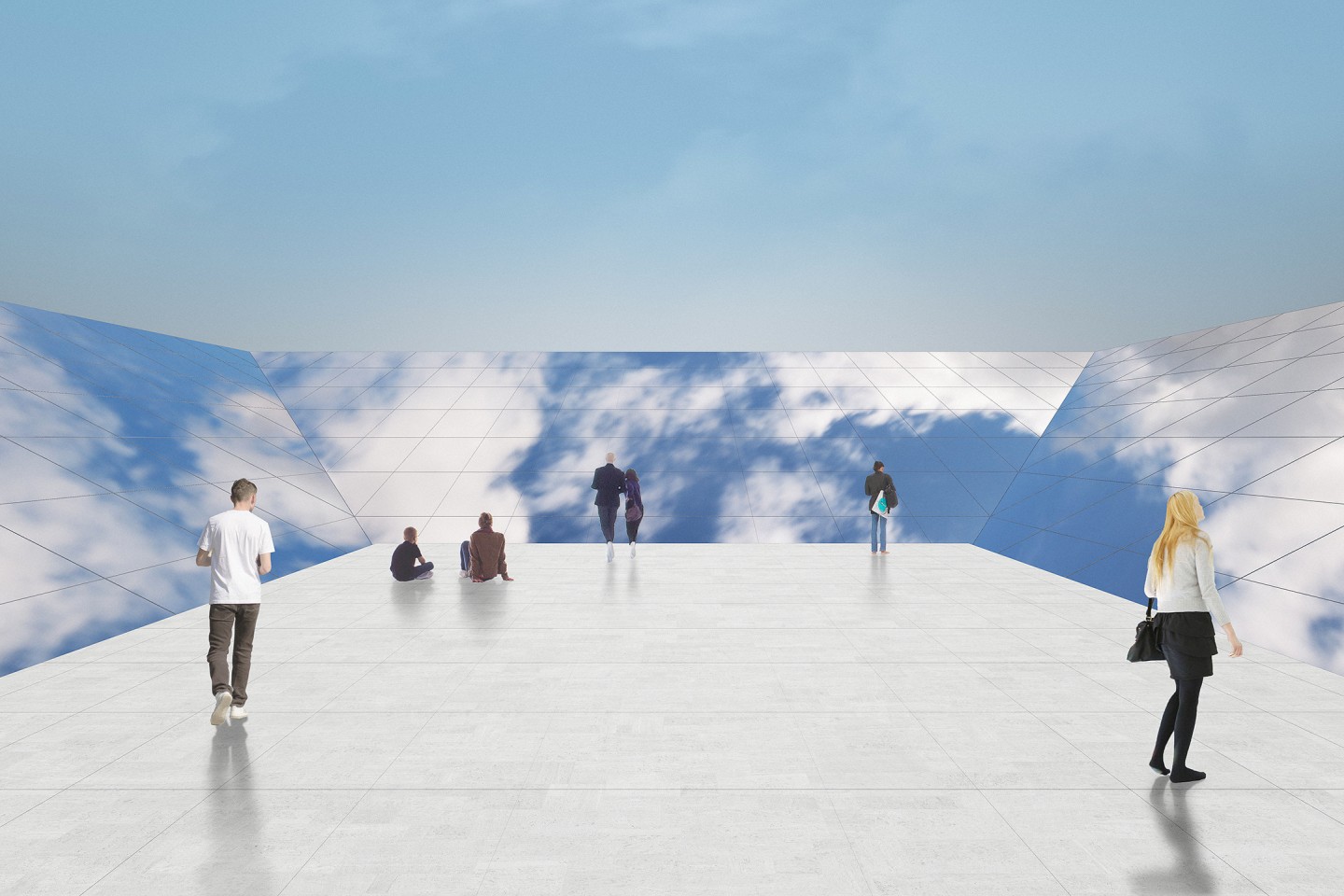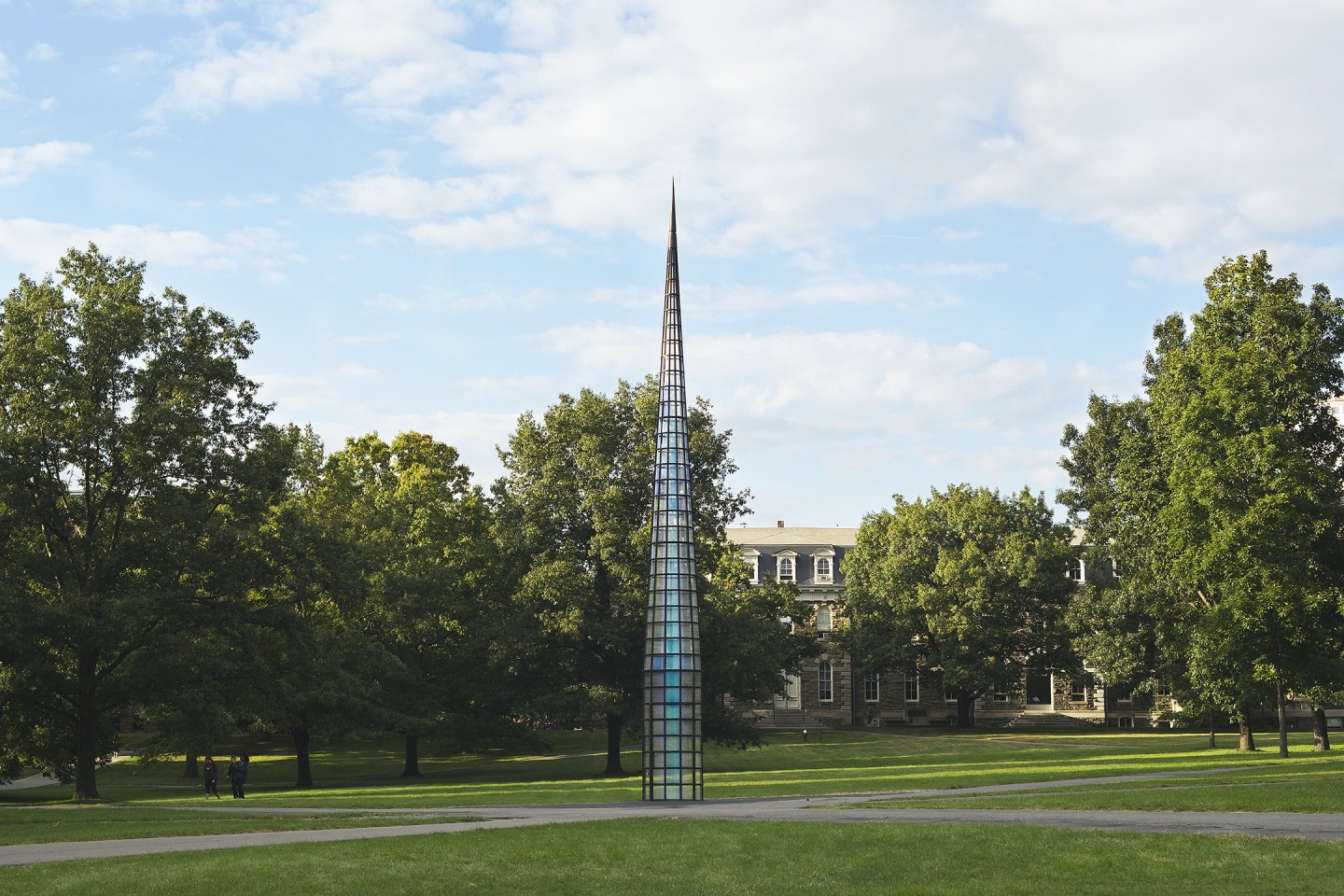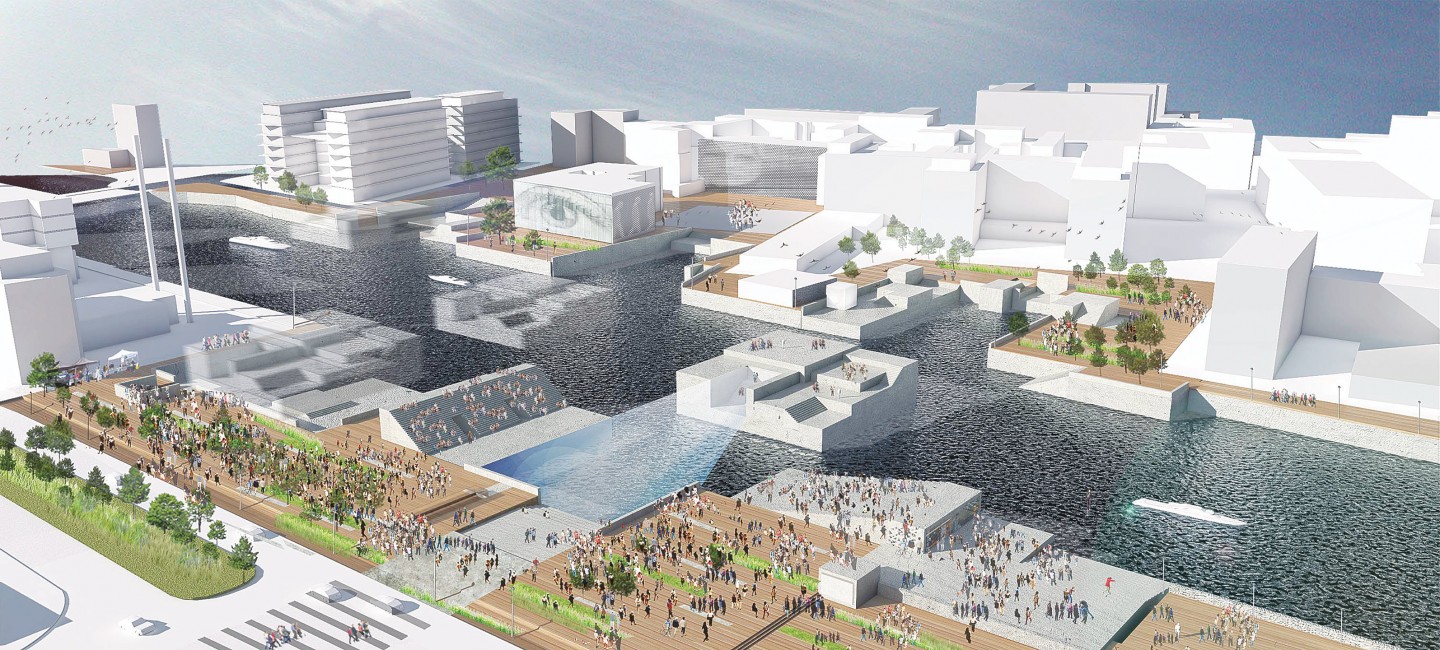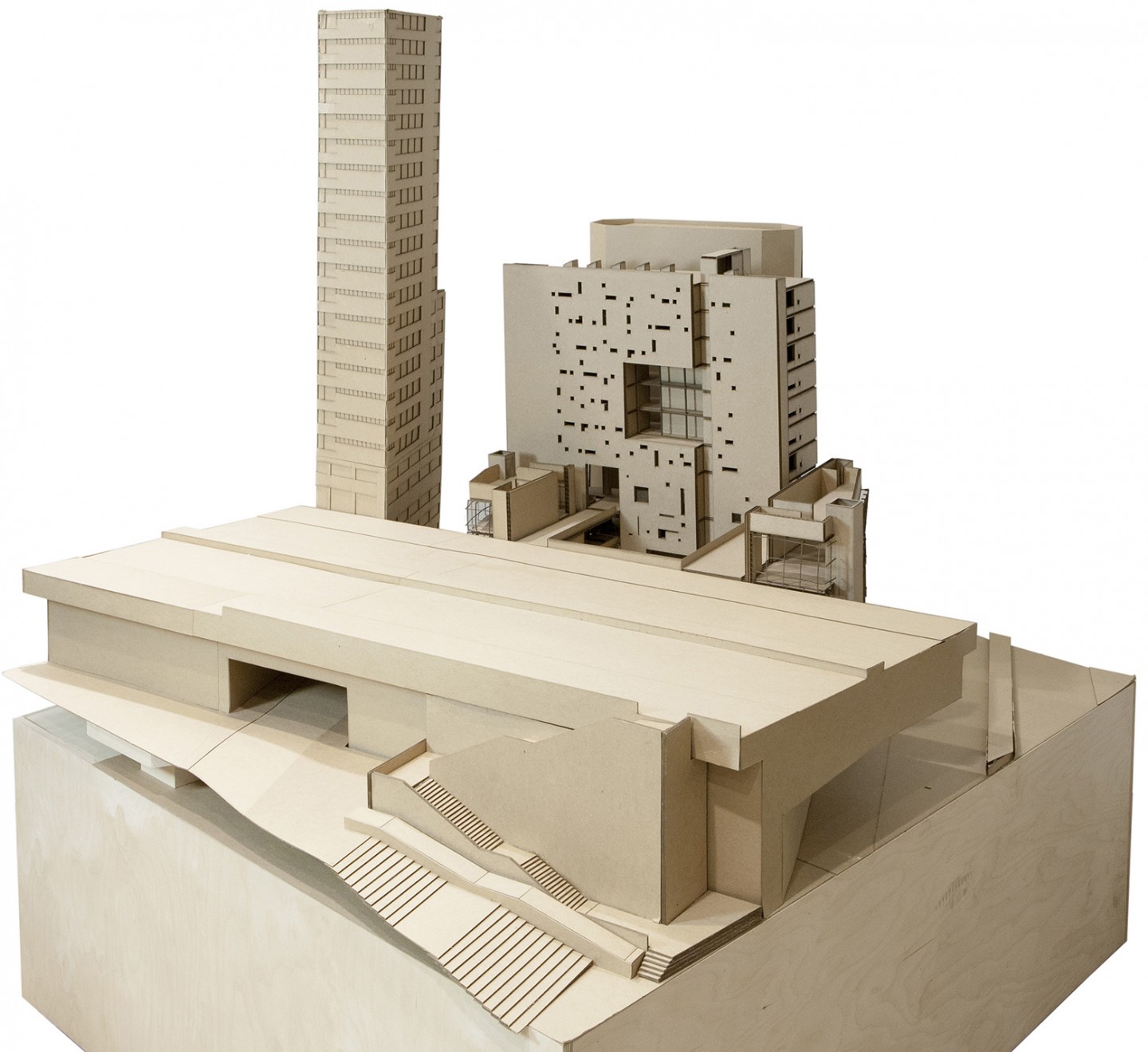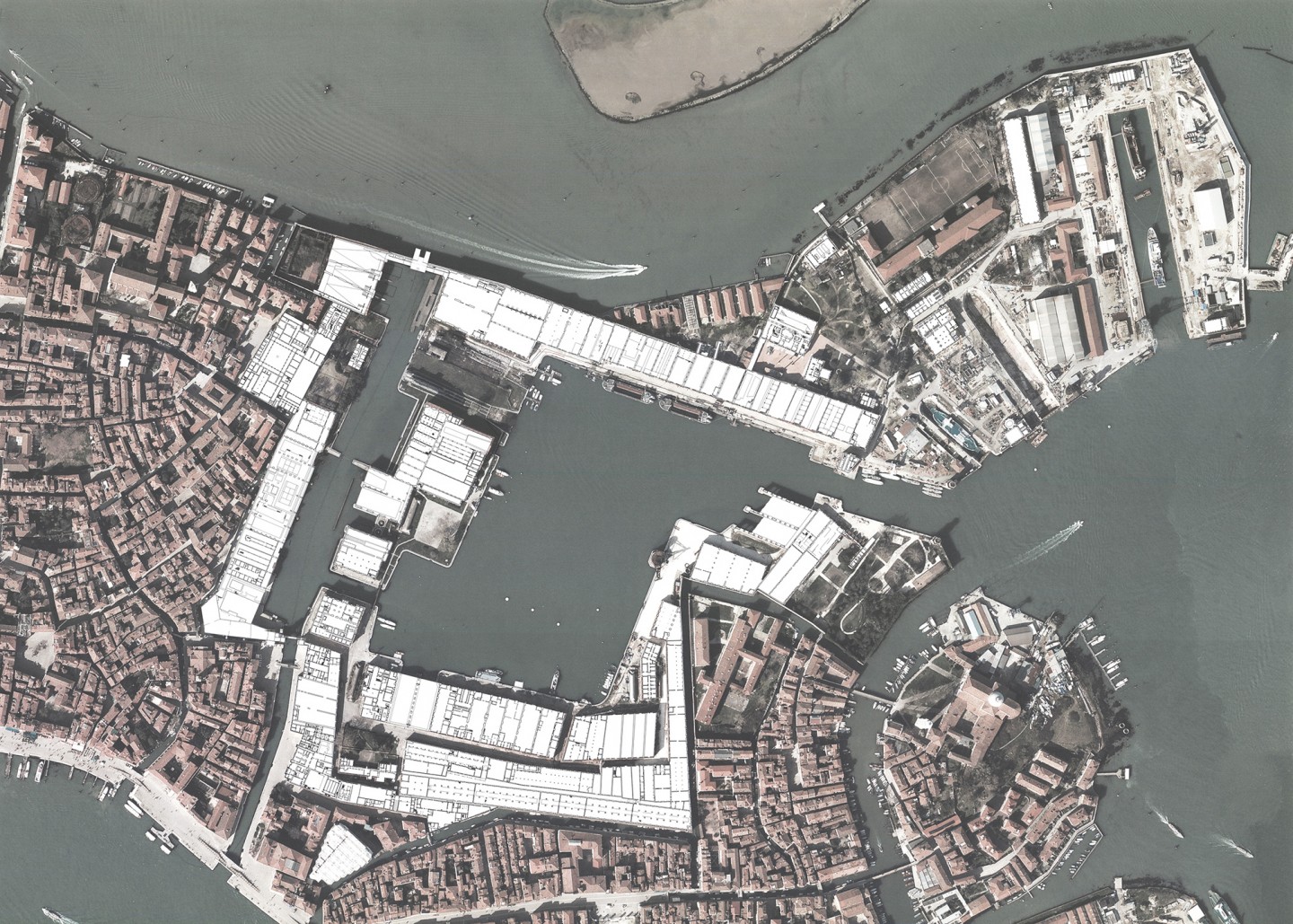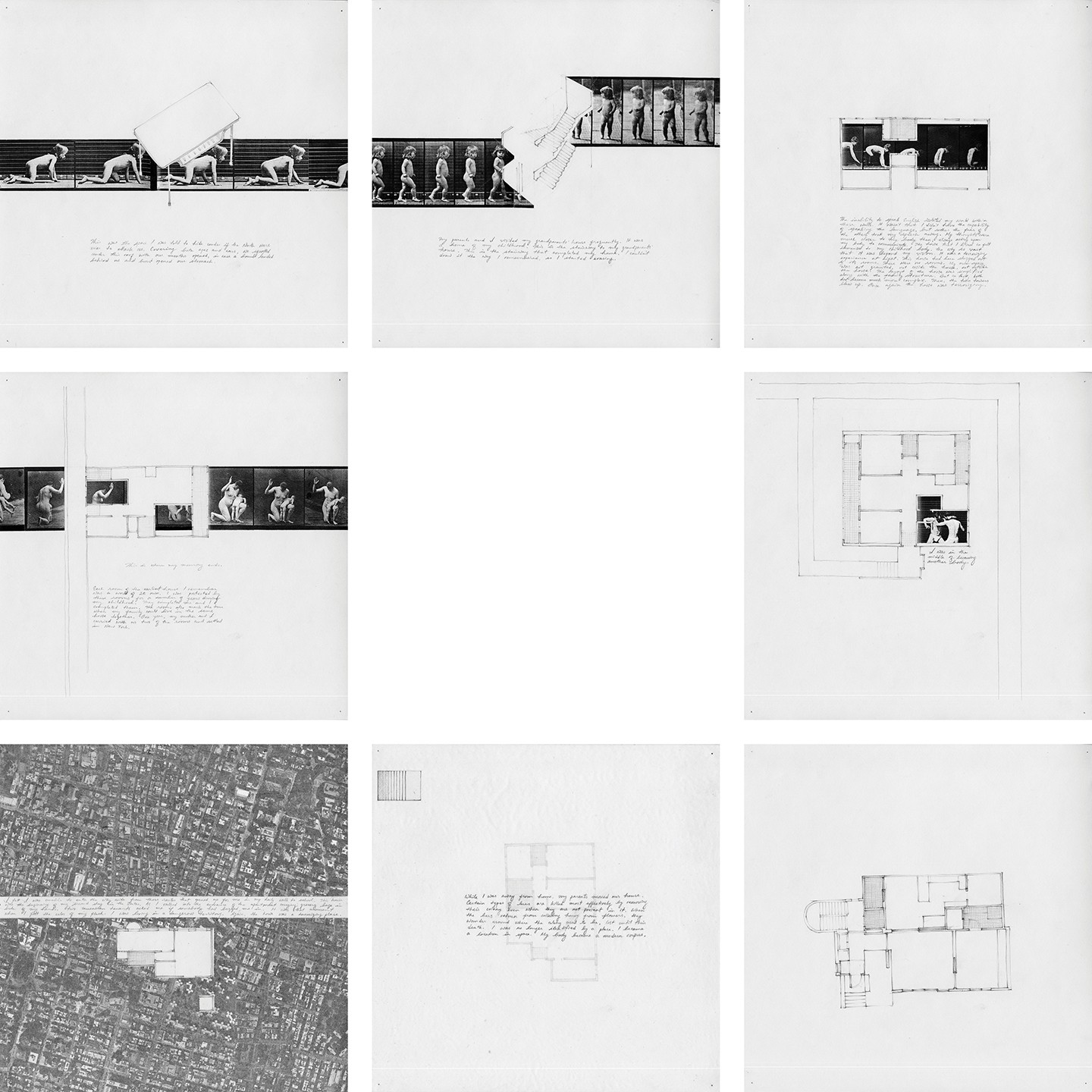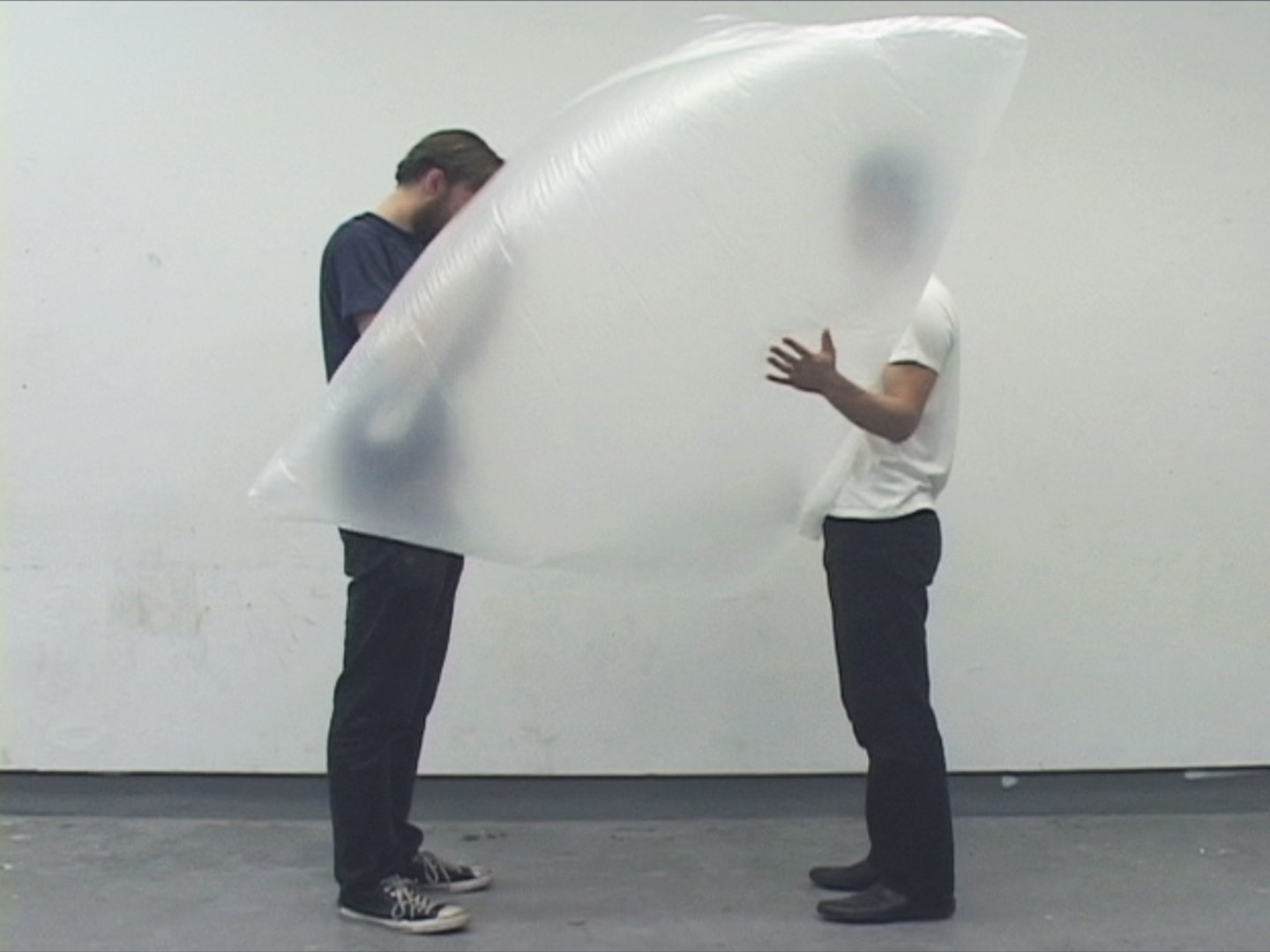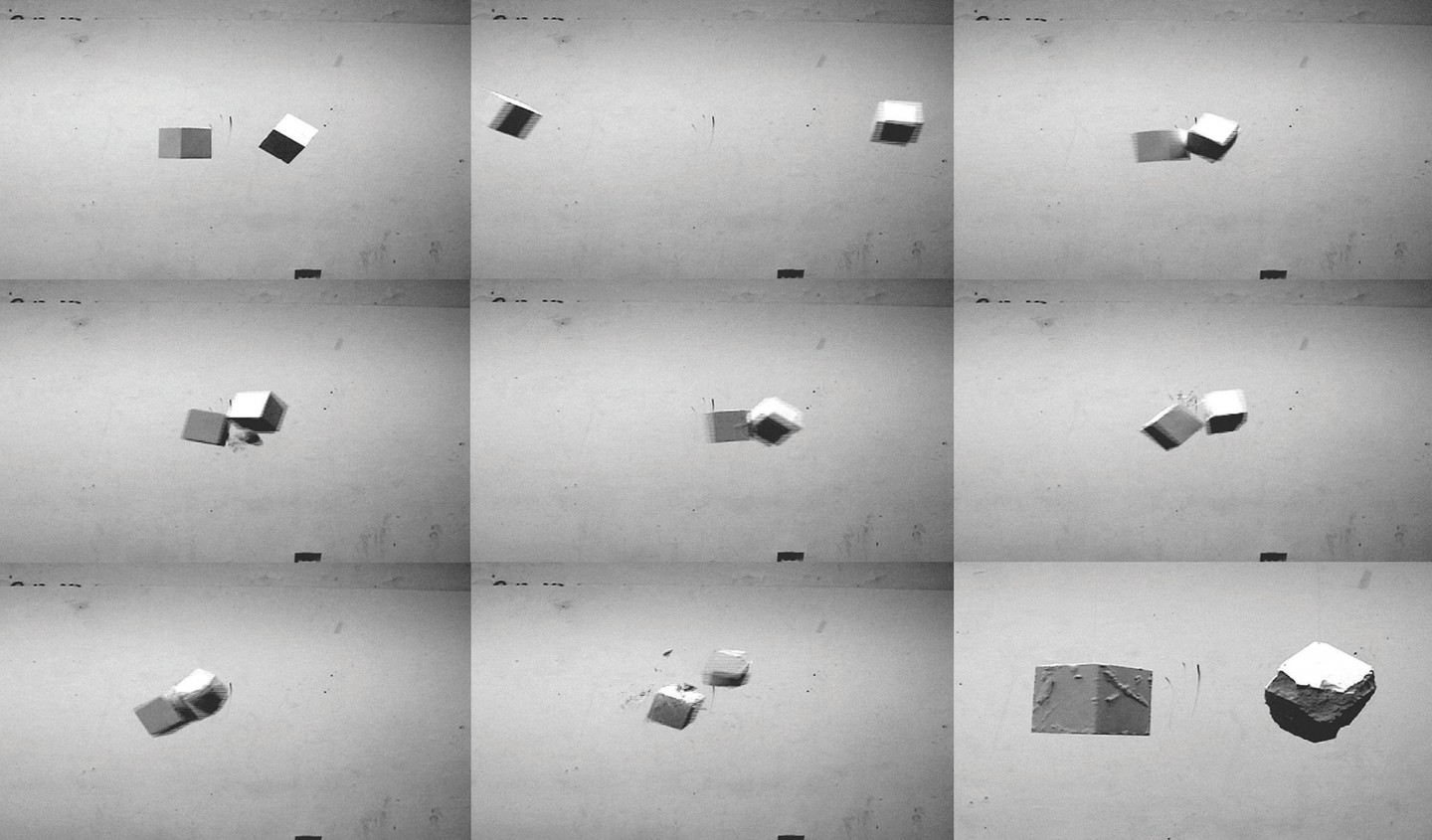337
337
337 stands at the corner of a bustling city block in downtown Seoul, Korea. It provides 45,000 square feet of retail and office space across 15 stories and elegantly defines the urban fabric with structural clarity and a subtle language of building systems. Sited along a major commercial avenue in one of the most densely populated areas of Gangnam, 337 maximizes retail frontage along the avenue and consolidates all visitor access to the street side, resulting in a typologically defined urban program and circulation around the building’s corner. The gridded façade provides a unifying visual and structural field for the diverse programs that would occupy the building.
As a prominent anchor for a dynamic urban intersection, 337 is structured around vertical and horizontal symmetry. The lowest and upper-most three floors have taller floor to floor heights than in typical levels in order to accommodate flagship retail stores and premium offices. This programmatic distribution, coupled with a system of mullions spaced at alternating intervals, establishes a horizontal axis of symmetry, as well as a language of growth, at the mid-level of the building. As a result, the building’s most critical datum is distanced from the ground level. The notion of detachment from the ground helps the building appear lighter and speak to the history of the site as a tabula rasa, which has been erased through the last half century following the civil war and accelerated economic growth.
- Date—2015-2020
- Location—Seoul, South Korea
- Size—45,000 sf
- Program—Office
- Collaborator—Kyuyoung Huh; Gudo, Associate Architect; Baum CM, HI Construction, Jeffrey Ng, Facade Consultant; Will Laufs, Laufs Engineering Design; Min Hee Lee, Signage and Graphics
- Team—Matthew Rauch, Jihyun Lee, Hong Bae Yang
- Status—Completed
Yeoui Naru Ferry Terminal
Yeoui Naru Ferry Terminal
The new Seoul Yeoui-Naru Ferry Terminal, titled "Ground of Nowhere," extends Yeouido's existing city grid out into the riverfront to provide a new urban nautical ground for the ferry terminal. The master plan comprises two zones; to the east is an area servicing public transportation, which anchors the new ferry terminal with ample room for large ferries, cruise boats, and government service boats; to the west lies a public marina, seamlessly integrated with Yeoui-Jeong, housing restaurants, cafes, shops, and open decks for public gathering and enjoying the views of the marina. Ferries, water taxis, and yachts enter and exit through the central area between these two zones, which has been left open for the visitors to look across Han River as they walk down to the riverfront park from the city side. Such a concentrated movement on water will activate the riverfront and transform ordinary activities into an extra-ordinary scenery.
The main terminal also comprises two components: a public courtyard sunken into a viewing deck on the roof, and a waiting area below. Four inclined planes of high reflectivity skylight system surrounds the upper level courtyard. These mirror ‘walls’ reflect the movement of the sky down to the visitors’ eye level, enwrap the courtyard with a panorama of the sky, and offer them an experience of standing on a suspended ground. This civic space functions as a symbolic and metaphysical entry point into a different ‘ground’ for the ferry users walking across the overpass from the subway. It is also a space of departure and a place to look inward. The waiting area below takes on an inverse spatial configuration, where a centrally planned space allows people to gaze out into the river and engage the activities outside the terminal. Here, each program, each path takes place at a specific, but co-dependent level. Horizontal planes of activity and circulation rise and fall ever so slightly and weave seamlessly with one another to accommodate an ease of movement across a vertical dimension.
Architecture
A critical idea latent in the site is the terminal structure ‘breaking-away’ of the ground. This derives from the unique nature of the site having a significant variation in water level. A constant fluctuation in habitable datum results in an unstable relationship between the ferry terminal and the park, whereby the terminal has to connect with the ground at multiple heights at different instances. This circumstance leads the terminal to act as a vertical circulation armature.
Conceptually, the impending physical disassociation from the ground raises the question of ‘sitelessness’ for architecture. Yeoui-Naru Ferry Terminal‘s structural composition, as a building sited on a buoyant pontoon and suspended from the ground in a constant state of motion, brings this notion into materiality. The roof courtyard provides a space to physically experience such an idea through a panorama of the moving clouds – elements that mirror the flow of water and time. This project offers a new frame of window into Han River and a defining cultural destination.
Site/Urban
The edge of Yeoui Island is surrounded by a wide strip of continuous Han River Park, which maintains an independent network of passageways from the island grid. The existence of this park is critical due to a significant fluctuation of water levels and frequent flooding during the monsoon season. However, a lack of continuity between the urban fabric and the Han River Park impedes people’s direct circulation from the island’s urban center to the riverfront, turning Yeoui-do into an island within an island.
In this sense Han River Park, too, functions as a river that channels circulation along a different path from one’s approach to the park. Our proposal bridges over this park ‘river’ by extending the city grid out into the waterfront and structuring the island’s edge as part of the city fabric.
Program
The Han River Park thrives with life and public events throughout the year. Its function as an open park offers the greatest diversity of programs spread across an expanse of leveled field. The new Yeoui-Naru Ferry Terminal draws these existing activities into its piers, interior hall, as well as roof courtyard, and provides a focal point to civic life in Yeouido.
Structure
The four sides of the roof come down to the ground and act as a continuous rigid frame against the lateral forces of wind and water current. Tall, thin steel columns spanning the entire height of the terminal prevents the bending stress of the roof plane.
- Date—2017
- Location—Seoul, South Korea
- Team—Soon Yeon Hong, Sangji Architecture Institute; Young-Hun Kang, Korea Maritime & Ocean University Professor; Will Laufs, Laufs Engineering Design; Yeon Soo Cha; Min Hee Lee
- Status—Competition
A Needle Woman: Galaxy was a Memory, Earth is a Souvenir
A Needle Woman: Galaxy was a Memory, Earth is a Souvenir
A Needle Woman: Galaxy was a Memory, Earth is a Souvenir was made in close collaboration with artist Kimsooja and nanoscientist Ulrich Wiesner on the occasion of the inaugural 2014 Cornell Council for the Arts Biennial. It is a 46 foot high, 4.5 foot diameter needle-shaped steel structure made for a transformative experience across changing light and time. The structure's grid-like, sleek, volumetric spine is fleshed out with acrylic panels to form a crystalline, transparent pavilion when seen directly. At a raking light, each of the panels, which have been individually treated with an iridescent nanopolymer, transforms the transparent pavilion into a radiant spectrum with color as the polymer refracts various wavelengths of natural light dependent on the angle from which it is viewed.
Created in collaboration with Cornell nanomaterial engineer and chemical scientist Ulrich Wiesner, molecularly engineered ‘block copolymer’ takes on precise structures to maximize the refractive qualities of natural light. Similar to the iridescence that occurs in nature on the wings of butterflies or shells of beetles, the color of the pavilion is physically interactive, where various spectral colors appear as a radiant glitch in the fabric of reality. The interior floor of the structure is mirrored, doubling its scale and light effects so that it appears to extend simultaneously into the earth and the sky.
Inspired by the perspectival direction of nanotechnology and French philosopher Henri Bergson’s thoughts on memory as related to metaphysical perception, Kimsooja explores the notion of the needlepoint as an intersection between distance and memory threading across a cosmic scale. While the announcement of earth as a ‘souvenir’ in the title suggests an object or gift, the idea of Earth as a readymade or readyused object functions as an aperture through which to view the work. Expanding on the notion of needle as a form and concept, this project addresses the needlepoint as both a void and a point of departure in time and space on an architectural scale.
By presenting a morphological form that assimilates the perspective of scale at the heart of nanoscientific practice as well as perspective in art and the universe, this project aims to explore the possible shape and perspective that reveal the invisible as visible, physical as immaterial, and vice versa.
All images courtesy of Cornell Council for the Arts and Kimsooja Studio, photo by Jaeho Chong, unless otherwise noted.
- Date—2014
- Location—Ithaca, NY, USA
- Program—Site-Specific Public Art
- Collaborator—Kimsooja, artist; Jaeho Chong, architect; Ulirich Wiesner, chemical scientist; Stephanie Owens, Cornell Council for the Arts director; Hiroaki Sai, PhD, Wiesner Group; Ferdinand Kohle, Wiesner Group
- Status—Built
Holzmarktplatz
Holzmarktplatz
The Holzmarkt site along the Berlin Spree has been largely defined by a history of national conflict, military surveillance, and social segregation. On this very site, an architectural boundary in the form of a concrete wall stood as an instrument of politico-ideological oppression by one nation against its citizens.
Holzmarktplatz offers a new vision for architecture’s past. It proposes an archipelago of public squares, which dynamically structures audience-performer relationships through the disposition of raised grounds and seating areas while providing an expansive civic space for cultural activities on both land and water. When in operation, a section of its horizontal plinths moves across the Spree to dock, activate, and capitalize on old and new fragments of programs inserted into the existing city fabric along the riverfront; effectively connecting the eisfabrik, radial system, and underused green open lots with the original Holzmarkt. Thus, the floating theater, together with its outdoor platforms, as well as the public inhabiting them, participate in the life of the city as actors on a spatio-temporal stage of the Spree.
Holzmarktplatz is an architectural transformation of the memory of Berlin Wall into a horizontal, shared ground of civic life that continuously interpenetrates and weaves across visible and invisible boundaries of Berlin.
- Date—2015
- Location—Berlin, Germany
- Program—Theatre
- Team—Hochung Kim, Jeong Sik Yoo, Mitchell Cramond
- Status—Competition
São Paulo School for Cooking
São Paulo School for Cooking
Located at the heart of São Paulo, the school for cooking and life skills provides space for marginalized urban population to re-integrate into the city economy by means of acquiring cooking skills. The proposal frames the site as a walled city, inverting the typical city block structure and positioning a public square between the thickness of the ground. the school functions as a vertical infrastructure that moves people through the two geographical levels of the city as it spans between the upper plateau at the viaduct level and the riverbed below. The public square shared by both the general public and the students is central to the school for two reasons: 1. With one of the highest crime rates in the world, São Paulo does not guarantee any public space to be a safe civic environment. Hence the “public” becomes a very specific group, in this case students and faculties, and they circulate and experience the square in a different way than the general public; 2. Middle-class apartment towers saturate Sao Paulo with gated communities that draw a hard boundary between public and private space. In order to restructure the security walls delineating socio-economic division, the project appropriates the “wall” to form a publicly accessible “interior” space at the center of the site. With these concerns, this project intends to portray the experience of Sao Paulo and to architecturally address pressing social issues tied to the program.
Yale School of Architecture; Tod Williams, Billie Tsien, Andrew Benner
- Date—2012
- Location—São Paolo, Brazil
- Program—School
- Status—Research
Architecture of the Boundary
Architecture of the Boundary
Considering Venice as an example of a boundary city, its physical edge between land and water is framed as an archi-tectural site in the context of an urban renewal initiative. Along the northern defensive wall and the galeazze of the historic Arsenale, the project proposes 1. an entry through the wall that acts as a new vaporetto stop, 2. a 1,800-seat auditorium within an existing Arsenale building, 3. an area including a lobby, restaurant, bar, and exhibition space, and 4. an alter-native program of choice. The entry brings visitors through a single gateway, which penetrates the Arsenale wall to form a vaporetto stop on the outside and an elevated cafe on the inside. Such combination of horizontal and vertical structure introduces a new type of space to Venice. As a way to bridge historic memory of the site and proposed public functions, the rest of the galeazze forms harbors that receive boat traffic. They provide a new soft boundary between land and water for the site that now serves a civilian purpose. Parallel to the architecture project, the studio developed a chair as a way to understand the translation from drawing to built object at human scale.
Yale School of Architecture; Massimo Scolari, Timothy Newton
- Date—2012
- Location—Venice, Italy
- Program—Wall Entry
- Status—Research
Mirroring the Void: Architecture and Self-Portraiture
Mirroring the Void: Architecture and Self-Portraiture
Using photography as a parallel medium to draw the human figure through space and time, this project constructs architectural portraits of human corporeality. I use self-portraiture as a means of creating distance between my body and its representation, yielding a photographic subject that is at once myself and the other. This shapes the foundation for developing a personal as well as universal portrait of the body in spatial form. Self-portraiture thus becomes an architectural methodology to embrace the other within one’s own reality – it is a way of engaging in a spatial dialogue with others. Between personal biography and anatomical studies, the project moves forward with the conviction that architecture can open an introspective path to a shared space.
The resulting physical form consists of two identical 7-foot cubical space bisected by a mirror with a circular void in the center. One can either enter into one of the cubical spaces through a circular opening that faces the mirror, or simply look into the space from outside. Upon one’s gaze, he finds his reflection absent by the void cut out in the mirror. With the erasure of human reflection, the spatial construct becomes a mirror that yields an immediate awareness of the viewer’s own body as it disorients his visual perception. Through this absence as a condition of self re-cognition, the project moves towards embodying a human dimension in spatial, architectural constructs.
The Cooper Union; Anthony Vidler, Hayley Eber, David Turnbull
- Date—2008-2009
- Program—Architecture
- Status—Research
1,148 Breaths
1,148 Breaths
1,148 breaths is a performative sculpture about the space that exists within and without us. It renders visible dimensions of human breath in a state of continuity as experienced and performed by the body. An alchemy of respiration transmutes air into breath, breath into space – a void that is spent life. The body in a state of rest continuously echoes the passage of this void through the layered dimensions of our material existence. Each moment builds interiority, transpiring life and giving form to the unbound.
- Date—2009
- Collaborator—J. Mautner
- Status—Research
The Body: Cube Project
The Body: Cube Project
The cube frames a perpetual architectural canon of the 4-square grid and the 9-square grid problem. It is often used as a foundation on which one constructs a formal language of space. This project approaches the cube as a form of physical and mental boundary. The human body directly confronts the cube as another form of a body, a physical entity with particular material resistence and scale. The preliminary part of this project studies physical relationship between the human body and the cube. It is then introduced with a program of a house for a single inhabitant and an abstract site situated on a 9-square grid plane. Fundamental human posture and activities along with the spatial concepts developed during the initial phase of the project constituted the generative principle for the house. This project led to a house that is inhabited only on its surface.
The Cooper Union; Guido Zuliani, Pablo Lorenzo-Eiroa, Catherine Seavitt, Elena Fanna
- Date—2006
- Program—House
- Status—Research

